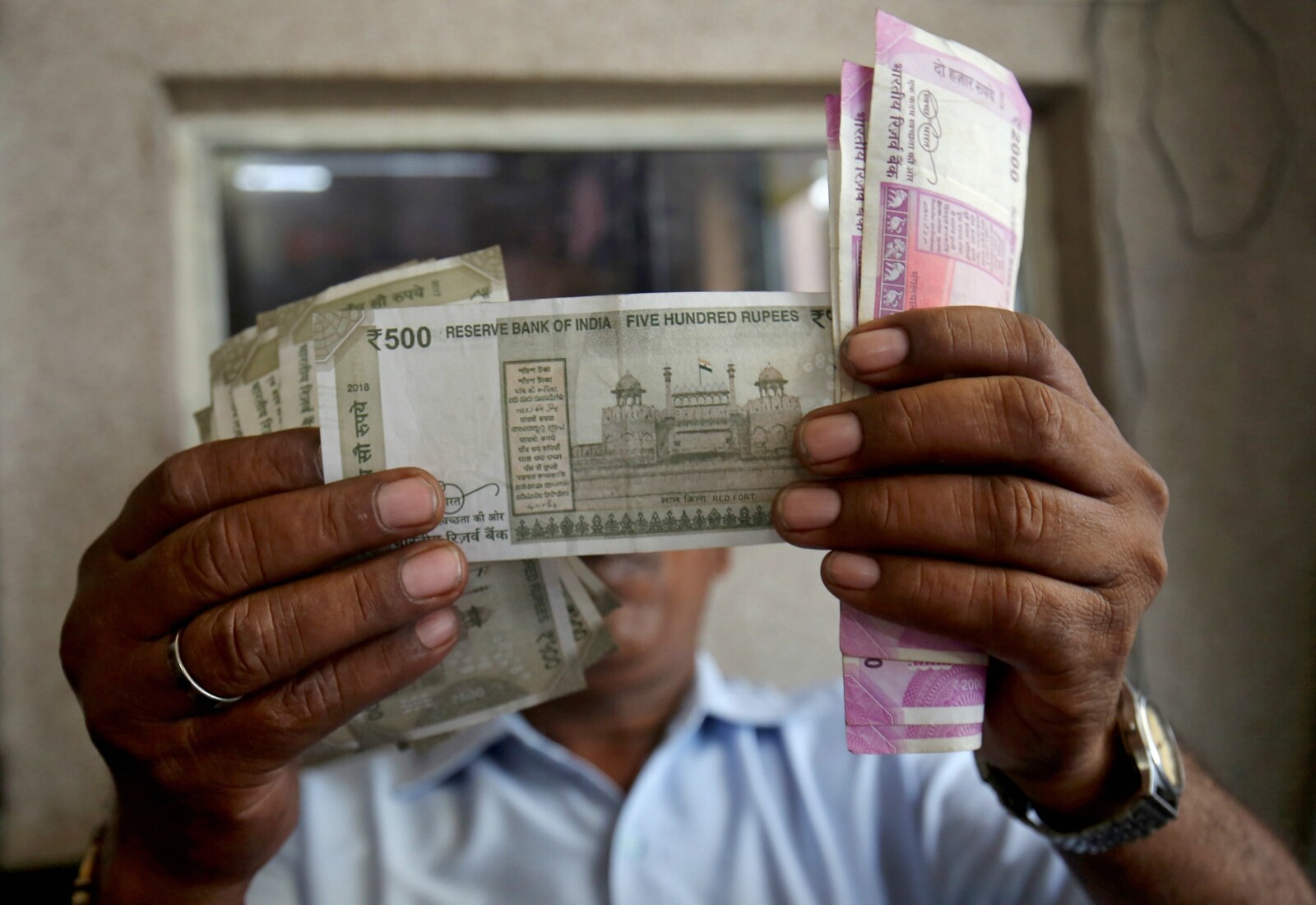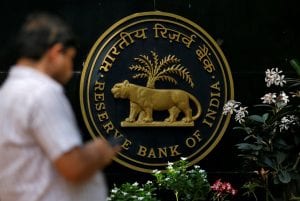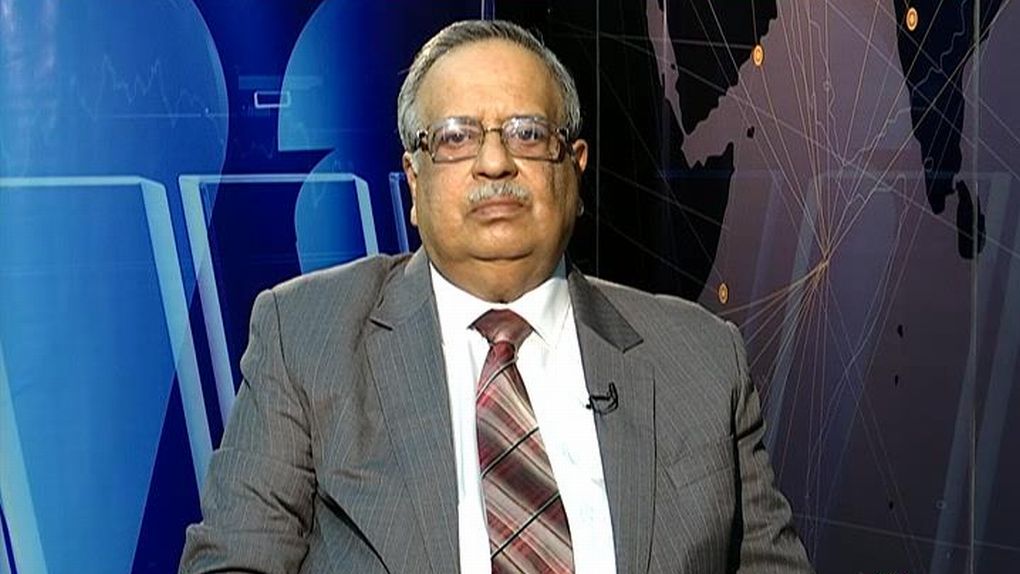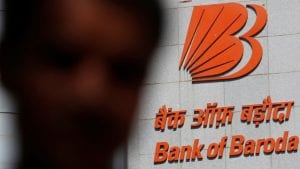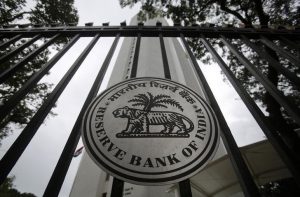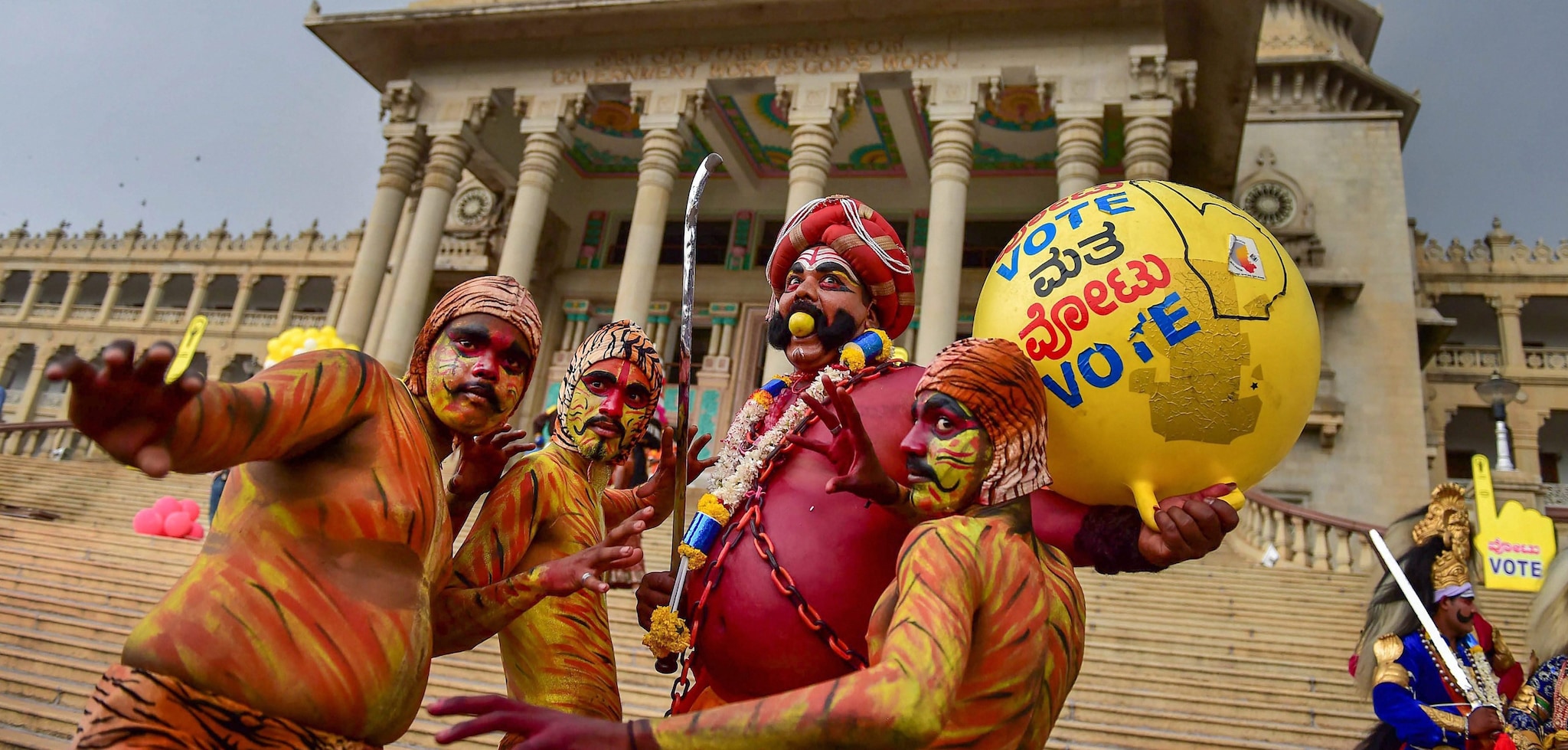Indianomics: PSU banks must be more vigilant about credit, says Bimal Jalan

KV Prasad Jun 13, 2022, 06:35 AM IST (Published)
 Listen to the Article (6 Minutes)
Listen to the Article (6 Minutes)
Summary
Over the past three weeks several public sector and private sector banks have announced their Q4 results. It expected that there will be an increase in NPAs after the Reserve Bank of India’s (RBIs) strict circular in February. NPAs have gone up across the board, but for private sector banks whose numbers have been declared so far, …
Continue reading “Indianomics: PSU banks must be more vigilant about credit, says Bimal Jalan”
Over the past three weeks several public sector and private sector banks have announced their Q4 results. It expected that there will be an increase in NPAs after the Reserve Bank of India’s (RBIs) strict circular in February.
NPAs have gone up across the board, but for private sector banks whose numbers have been declared so far, the gross NPA’s have risen from 3.8% as of December 31 to 4.39% as of March 31.
For the public sector banks, it stood at 13% as of end December and already it is at 16.5% with a few more banks yet to announce numbers.
CNBC-TV18 caught up with M Damodaran Former Chairman of Sebi and Bimal Jalan former RBI governor to understand whether the country should start accelerating steps to restructure and correct the public sector baking system.
Edited Excerpts:
Would you recognise that now we are in a situation which is dire and we have to think of surgical or accelerated steps to correct the public sector banks?
Damodaran: It is all about diagnosis, prescription, and treatment. Have we diagnosed the problem correctly? The wrong way to look at it is to bundle all of this together and say public sector banks have a problem. The problems are different in each of the banks. Some banks are lacking in skill sets and credit appraisal is poor, let us admit that.
Some banks are suffering because of indecision at some level, some have had lack of continuity at top levels, some have had no one at the top level for a long time and that is not the fault of the public sector bank.
So to derive the problem statement from ownership is not right. You got to find a bank specific solution, you got to task the board among others. In all of this, the board cannot be either interested or uninterested spectators while the game is going on.
I think it is important to recognise that you must have a strong board. The guys that are not performing, show them the door, reconstitute the board, and tell them to quickly come up with a bank specific solution for this.
There are several reasons why you have numbers as large as this. Take infrastructure, there has been lending to infrastructure by the banks, there has been mismatch in terms of the terms for which you raise money and the kind of commitments that you have in the infrastructure space. Why did that happen? Clearly they were not dying to get into infrastructure, but for some reason they got in.
Some of the private sector banks which are reporting smaller numbers are not in the infrastructure space. Even given all the problems of the infrastructure, if they went in with open eyes knowing what they were getting into, fine. Then you had court orders, which suddenly made some of these sectors millstones around the neck of the economy and the banks will suffer in the process.
If you have well intentioned sweeping orders, I am not doubting that, but it tends to impact on the lending institutions and that is something they could not have foreseen.
Then the empowerment. Do the chiefs of public sector banks see themselves as empowered? I am not sure they do because everything seems to be coming from Delhi by way of instructions. That is not the way ownership should function. I believe that these problems can be fixed, but they must be fixed in a bank specific manner by an empowered board that is reconstituted on the basis of what they bring to the table.
Since you have already gone through three banks, United Bank, UCO Bank, and Indian Bank, you know the small banks. The small ones United Bank, UCO Bank, Indian Overseas Bank (IOB), Dena Bank, what would your recommendation be for this set of banks?
Damodaran: Dena Bank has had problems for several years. They have barely kept the heads above water; for even in good times they have not been one of your bright shining examples of banking.
If you look at Indian Bank, clearly from where it was, it was completely written off. I know mine was a minority voice which said that we can fix this bank and a lot of people said it is best to shut shop and setup another bank. That has come around.
Take IOB, it is a classic example. During the worst of times or shortly thereafter, it was leaderless for a long period. I am told the Banks Boards Bureau (BBB) recommended names, but nobody got appointed. Now if you just allow it to be leaderless, clearly that is a problem.
You look at what the sectors are to which these banks are exposed and then you can look at this.
For example, United Bank of India has always had a problem that it is a successor of banks that were located in what is now Bangladesh. Huge exposure to tea gardens, priority sector, all of that, no large accounts. Therefore, it was not a very happy situation for a bank to be in and yet they managed for a while. Now you cannot run these by remote control from wherever you are sitting. Why tar everyone with a same brush and they are public sector, therefore, they are bad.
Even if we avoid the blame game, still what is the solution? Obviously United Bank of India cannot survive as it is. Do you think we have to experiment with privatising, selling some, or selling one bank?
Damodaran: The answer is not privatisation. We have seen and I do not want to take names, we know what is happening in the private sector banks. I think there is enough evidence that whoever is dealing with them is mollycoddling them and they are not being treated in the same strict manner as some of the public sector banks are whether these are banks or executives, no issues of conflict of interest and I have gone public on this.
If there were something like that in a public sector bank, you would have thrown the book at them. You clearly are not doing that just yet, we see no evidence.
However, to come to your point, the answer is not privatisation. What did we do in IDBI? You are talking about 16-18%. I led IDBI at a time or I got into IDBI at a time when the NPAs where close to 30% and even then one of the big four said this is an understatement, it should be closer to 40% odd. We carved out a stressed asset stabilisation fund.
You cannot find solution to this within the conventional methods. Now, if you can draw a line and say these are the assets which are my problem assets, I will keep them somewhere. I will continue to lend, shrinking a banks book, making it a narrow bank is a bigger problem. Getting into narrow banking, the bank raises deposits, it invests in securities, it will not lend, it is not going to get the bank anywhere certainly.
What you need to do is, take out that portion which can perform, which still has a large amount of standard assets. Deal with NPA separately from outside your normal banking space. Do not apply interest to that. Part of these numbers, these are interest on interest applications and compounding is – if it works for you, it is great, if it doesn’t work for you, it is terrible. Then find solutions on an asset by asset basis.
There are assets here where the problems are cyclical where these will turnaround if you just maintain them over a period of time. However, when they are on your books, they will go from sub-standard to doubtful to loss, you will need to make huge provisions and then you cannot take them off your books.
Specific solutions which can be found outside the books on a bank specific manner and continuity of leadership at the top. Select good people, give them five years. You change a person to Indian Bank allegedly because he did not do well in IDBI and then you punish Indian Bank by getting its performing managing director who did well for three years into IDBI and within a week you say IDBI is under Prompt Corrective Action (PCA) then why did you bring him then, to do what?
What you are speaking about, taking out some bad assets and freezing their interest rate or substituting it with bonds is one way to go ahead. Would you say the power sector is in that space now because with Reserve Bank of India (RBIs) new rule of abolishing CDR and SDR, about Rs 1.82 lakh crore of power loans will go to the NCLT, you think that is right to be treated in the way you are saying?
Damodaran: The point with the power sector again is I would look at it asset by asset. There are some where the plant has been completed, the fuel is not available, and so it is not performing.
20,000 megawatt are those plants which do not have a power purchase agreement (PPA).
Damodaran: You do not have fuel in some cases, the plant is ready. Now these are at the end of the day whoever owns it, these are national assets. All of these came up at a time when you were hugely deficient in power.
Today we can live without these, it does not matter, and focus rightly on renewable energy, I am not saying that, but it does not mean you pretend these assets do not exist, physical assets, forget assets on your book. So why is it that you cannot use some other instrumentality? Can NTPC manage this if it is a management problem? If it is a fuel problem can you find – there is fuel available in the world.
Of course, it comes at a price, but is that a smaller price to pay compared to allowing a plant to be just mothballed because it does not have fuel and hoping one day things will change? It does not work like that. Some assets definitely can be dealt with if you dig deep and figure out what needs to be done. Now who will do this, this cannot be your insolvency professional because this task is different.
This is the government job.
Damodaran: Not even the government. If the government creates enabling environment and tells people who are involved in this industry saying okay we are giving you this problem, find out. I have always believed that if you take all the chambers of commerce and industry — CII, FICCI, ASSOCHAM — the wealth of intellectual capital that resides there and the ideas, their ability to create solutions is huge. Task some of them with finding solutions to this.
We have to admit talent is not coming to public sector banks anymore, perhaps the stoppage started in 1991 when private sector started burgeoning. Our bright young engineering and IIT graduates preferred either IT industry or preferred the private sector, but clearly the march of new talent into public sector banks has dried up. Therefore, from a personal angle, do we need fewer banks because the lower echelons get very well paid and the upper echelons get poorly paid compared to private sector, not just banking. So is there a big rethink needed? First of all fewer banks so that the available talent is better used?
Damodaran: The fewer banks problem should have been addressed some years ago when government had some banks that were 100% government owned and some banks that were partially government owned, majority government owned. Now that you have public shareholders in all these banks, there will be obviously some kind of resistance to mergers. We have not seen a merger taking place in this.
But cannot they be forcibly demerged? If they were forcibly nationalised overnight at the whim of a prime minister, we have a powerful prime minister with a very big mandate, cannot there be legislatively?
Damodaran: Then identify those which are not viable. There are some which no matter what you do will not, they have been always performing somewhere on the border and they have gone down. The solution is different for them as for the others. It is like in the financial sector.
What do you do for the bottom of the pyramid?
Damodaran: For the bottom of the pyramid do you think there will be people who will buy that?
For the branch network they will not?
Damodaran: They could buy, you could get retail accounts. Lots of things command a price in the market, whether that is a worthwhile price and will the shareholders be willing to go with that or would you want to shore up the operations there, fatten the calf before dealing with it separately.
I think as you mentioned, people is important. Let me say, I am a great believer in the proposition that public sector banks have huge talent. Have you looked at that talent? The selection processes for top positions have been sub-optimal. If you had actually looked for merit, these are the banks which have provided leadership to most of the private sector banks, and you are saying they are doing well, so where did they come from? The same stock.
I am referring to the more later periods, after Indian private sector.
Damodaran: It is the way you go and find people. I am great believer in the fact that the board of directors should be strengthened and told these are we think your problems, you take a look at it, find out what your problems are, come up with solution, any number of good people who should be roped into board positions. Are they on the board? I do not know.
What do you think is the immediate step the government needs to take with these 11 banks or with some of the very weak ones which under the prompt corrective action are not even allowed to expand branches? Is the first step to infuse more capital in these banks?
Jalan: Yes, and that I think the government has already probably decided to infuse capital and to recapitalise public sector banks. We must remember that public sector banks are the ones which have given lot of priority sector lending to small medium enterprises and are extended into rural areas and so on. So, for the banking structure to function collectively for all our people, it is of essence to have the public sector banks being revived. The government is taking the steps and the banks have also now started prompt corrective action. In the prompt corrective action the whole idea is to try and see that they can reduce their NPAs within a time bound period.
However what we have to take into account and I think we should permit that, that let us not reduce the credit advances by banks to zero as it were or to very low amount. What we need to do at the same time is that the vigilance system of the banks over the borrowers, guidance as well as scrutiny of their viability has to be strengthened and the government as well as the public sector banks individually are taking action to do so.
The situation is certainly painful, situation is certainly bad and has gone for a long time. This is the other point which we should keep in mind that why has it gone on for so long?
We have to admit that there is a structural problem with some of the public sector banks. The NPAs of private banks who have practically lend to the same economy are as of March standing at 4.39%, while that of PSU banks that have announced so far, the NPAs stand at 16% plus. Surely there is a structural problem here.
Jalan: This essentially has to do with the governance system, unless you hold the board responsible and accountable for scrutiny, for making sure that these NPAs are not taking place rather than the government or directly the ministry or something. The ministry can certainly monitor it. It is not that all private sector banks are doing very well. The essential part that you are saying is that the average NPA for private sector banks are lower.
You have to ask yourself the question that, why is it that it is lower? The essential part is the governance system – Board should be appointed, board should have independent directors and so on and so forth and much of that has already been done. However, there has to be decentralisation of execution vis-à-vis policy making.
For policy, government must make policy that public sector banks should provide rural employment, should have priority areas and have infrastructure which the private sector banks won’t finance because it is long term, the rates of return are lower and so on and so forth. So, the policy the government announces, but the governance part it is essence that we ensure that the public sector banks are governed.
All of us as citizens we can expect our government to monitor performance and if it is not functioning take action within the next 6 months and not after 3 years.
You alluded to board independence, but recently three independent board members were named in an FIR for a loan that has gone bad and they have since resigned arguing, how would they know about the due diligence done on each loan? If we pursue in this, good people may not even want to be independent directors in public sector banks?
Jalan: You can tackle that, that is not a difficult issue over time. If you just take a stroke and you say that I will hit you, then nobody would want to be hit.
However, if you prescribe the norms to be abided by and it does not mean that banks should not lend, otherwise what is the point of having a bank. The whole system whereby the appraisal of bank is made every six months or every one year by the board of directors, that should be done to make sure the minimum prescribed norms of evaluation, norms for making sure that lending by banks has conformed to the guidelines which have been setup by the bank boards and so on and so forth.
It does mean that you should not give priority sector lending or small sector lending so on and so forth as it is important for the country. However, based on the policy announced by the government, there should be monitoring of performance of the bank every six months by the board of directors.

Elon Musk forms several ‘X Holdings’ companies to fund potential Twitter buyout
3 Mins Read
Thursday’s filing dispelled some doubts, though Musk still has work to do. He and his advisers will spend the coming days vetting potential investors for the equity portion of his offer, according to people familiar with the matter

KV Prasad Journo follow politics, process in Parliament and US Congress. Former Congressional APSA-Fulbright Fellow










 Listen to the Article
Listen to the Article  Daily Newsletter
Daily Newsletter






